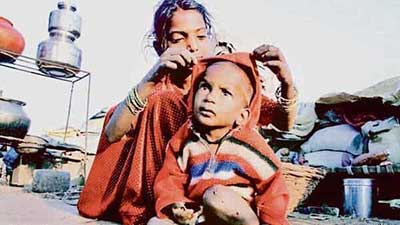Date: 02/02/2023
Relevance: GS-3: Indian Economy and issues relating to planning, mobilization, of resources, growth, development and employment.
Key Phrases: Economic Survey, SDG, Poverty, Progressive, Inequalities, Multidimensional Poverty, AB PM-JAY, Out Of-Pocket Expenditure, Social Security.
Context:
- Over 400 million Indians escaped poverty between 2005-06 and 2019-2021, according to the Economic Survey 2022-23, tabled in Parliament.
- The Economic Survey stated that the focus on social welfare is all the more pertinent in the contemporary scenario as India has adopted the UN SDGs 2030, which are a set of comprehensive, far-reaching, and people-centric universal and transformative goals and targets.
Key Highlights:
- The survey highlighted the key findings of the United Nations Development Programme’s (UNDP) global Multidimensional Poverty Index (MPI) 2022 report released in October 2022, covering 111 developing countries.
- The survey stated that over 41 crore (410 million) people escaped poverty from 2005-06 to 2019-2021, demonstrating progress towards the Sustainable Development Goal of reducing poverty by half by 2030, as measured by the UN Multi-dimensional Poverty Index.
Poverty:
- Poverty is primarily measured in terms of lack of monetary means for a decent living for instance lack of access to healthcare, clean drinking water and quality of education.
- However, by definition ‘poverty’ has wider implications and leads
to multiple disadvantages at the same time – such as poor health or
malnutrition, lack of sanitation, clean drinking water or electricity, poor
quality of education etc.
- Multidimensional poverty measures are hence used to create a more comprehensive picture.
- The UN report stated that 16.4% of India's population (228.9 million in 2020) was multidimensionally poor and another 18.7% (260.9 million in 2020) were vulnerable to it.
- The survey explained the UN report's findings, saying that 41.5 crore people in India left poverty from 2005-06 to 2019-21, showing that the SDG target of cutting poverty in all its dimensions by at least half by 2030 is achievable.
What is the Multi-dimensional Poverty Index (MDPI)?
- Rationale and definition:
- Multidimensional poverty assessments aim to measure the non-income based dimensions of poverty, to provide a more comprehensive assessment of the extent of poverty and deprivation.
- Several international multidimensional poverty tools
exist, including
- The EU-2020 official poverty measure.
- UNDP’s MPI (a headline index summarizing the proportion of people in poverty and the intensity of their poverty, which breaks down by indicator).
- The “Bristol” methodology to measure multidimensional poverty of children.
- UNICEF’s MODA (multidimensional poverty of children).
- IFAD’s MPAT (10 separate indicators).
- The Multidimensional Poverty Index (MPI) is published by
the UNDP’s Human Development Report Office and tracks
deprivation across three dimensions and 10 indicators: health (child
mortality, nutrition), education (years of schooling, enrollment),
and living standards (water, sanitation, electricity, cooking fuel,
floor, assets).
- It first identifies which of these 10 deprivations each household experiences, and then identifies households as poor if they suffer deprivations across one -third or more of the weighted indicators.
Government’s Aim and Initiatives:
- The survey mentioned the government's aim to improve India's healthcare
system and meet current and future needs.
- Survey stated that the government is focusing on increasing primary healthcare spending, which rose from 51.1% in FY14 to 55.2% in FY19, to provide accessible health services at the basic level.
- The survey praised the Ayushman Bharat Pradhan Mantri Jan Arogya
Scheme, which provides free care to nearly 200 million people across
over 26,055 hospitals.
- It noted that 154,000 health and wellness centers have been established nationwide under Ayushman Bharat.
- The survey stated that the share of government health expenditure in total health spending has increased from 28.6% in FY14 to 40.6% in FY19.
- The Economic Survey stated that the expenditure on social security for health has risen from 6% in FY14 to 9.6% in FY19, including social health insurance, government-financed health insurance, and medical reimbursements for government employees.
Conclusion:
- The significant increase in government health expenditure and its impact
on reducing Out of-Pocket Expenditure (OOPE).
- With increased government expenditure on healthcare, citizens are now better equipped and have better access to healthcare, leading to a decline in OOPE as a percentage of total health expenditure.
- The Economic Survey highlights India's commitment to creating an era of
"Amrit Kaal,” where the focus is on both economic growth and social
welfare.
- The country aims to ensure that the benefits of progress reach every member of its diverse population, regardless of culture, language, or location, recognizing them as the true wealth of the nation.
- The goal is to leave no one behind as the world continues to recover from the pandemic and ongoing conflicts.
Source: Live Mint
Mains Question:
Q. India on track to meet SDG target as over 400 million exit poverty. Discuss (150 words)







